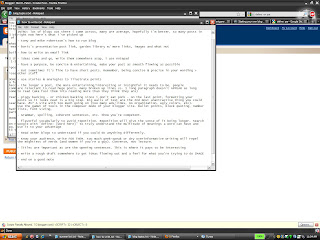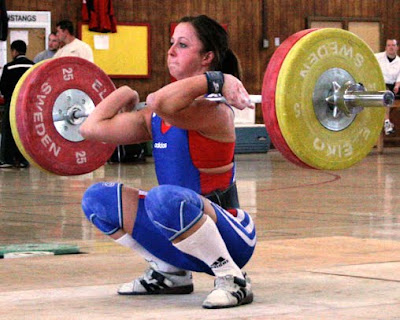Kids work on technique then start
resistance training sometime around puberty.
resistance training sometime around puberty.
A forum member over at Precision Nutrition had a question the other day I replied to. It was about ditching weight training in pursuit of other sports to improve athleticism.
It was a great goal, but the problem was disentangling the misconception. I responded as thoroughly as possible describing a skill/sport vs. strength & athleticism and how they're independent one another.
Long story short, the latter contributes to the former. That's not the best description, so here's the response I wrote. Bold is my emphasis.
---------
The question was:
I love the weight room. I love pumping iron. I love seeing numerical increases in my strength and power.I replied:
A little voice, however, has been growing in the back of my mind. It's now too loud to ignore.
I think we can all agree that the human machine isn't designed to be strong and powerful so that it can execute a number of weighted exercises. It's designed to be functional in any number of environments.
Up until now, I've been concerned primarily with visual results attained by reaching goals in the weight room. Now my desire is leaning more towards functionality. I want a lean, strong and powerful body that can run, sprint, swim, cycle, treacherous trail run, judo, dance, hunt, etc. I want a body that can take on the world, not just a 500lb deadlift or a 275lb bench press.
In a few months, after I've achieved some muscle balancing goals, I plan on spending almost all of my exercise time OUT of the weight room. I plan to cycle more (my cardio of choice). I plan to be able to run without gasping every 5 minutes for air. I plan to be able to swim a mile or two without choking. I plan to take up a martial art. I plan to be increase my flexibility by challenging my body in a fluid, non-regimented way.
My question is, how do I learn to recognize how to supplement my activity with regimented exercise? Pull-ups, push-ups, core work, dips, etc.? In other words, if I'm going to limit my regimented exercise to only body weight manipulation (and that exercise will be strictly supplemental to support an already active and challenging lifestyle), what type of routine would I build? How often would I implement that supplemental routine?
I know this is probably a unique thread, but I feel some serious feedback could be very beneficial for anyone looking to get out of the weight room, for anyone who doesn't have the time to constantly be in the weight room, or who simply wants their exercise to come from other sources.
Those are all different skills which require practice to become more efficient at.
Weight training is a means to increase strength which transfers over into those areas....well, maybe not hunting (unless you kill it with your bare hands).
For example, sprinting well requires technique and type-II muscle fibers (which are strength & power based). The more developed those muscle fibers - assuming technique is already good - the better your acceleration, speed, etc.
The in-betweens to better transfer gains from the weight room to actual sports are utilizing specific drills to hone technique and selecting exercises similar to movements to a specific sport. A shot putter would benefit from incorporating barbell corner presses in an off season program to increase throwing strength. During the season, they would practice throws to adjust to the newly acquired strength.
Also, keep in mind body weight exercises aren't all that different from weighted exercises. A squat is a squat regardless of it being loaded or not.
I'm sure that's not what you wanted to hear, but if optimization is your goal then ditching the weight room altogether doesn't seem like the best choice.
He didn't respond yet. I hope I didn't scare him.
Have a good Memorial Day weekend everyone.



